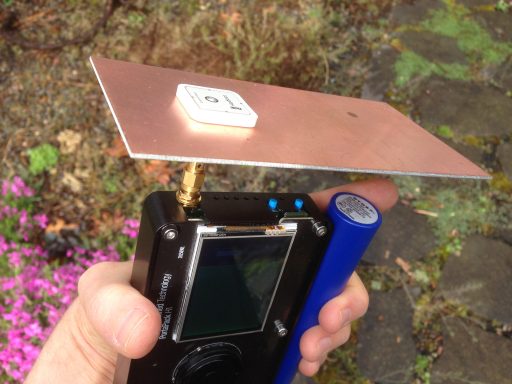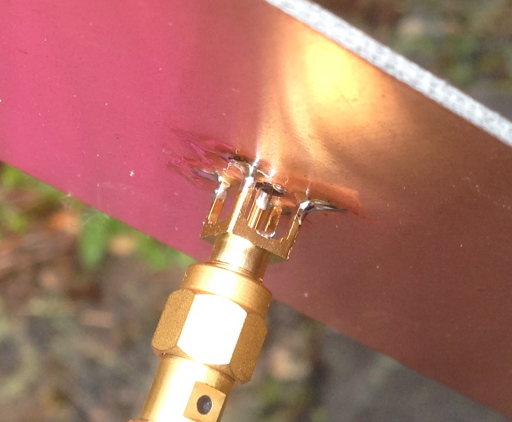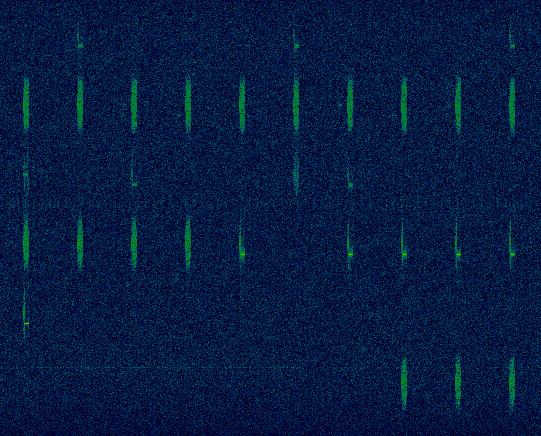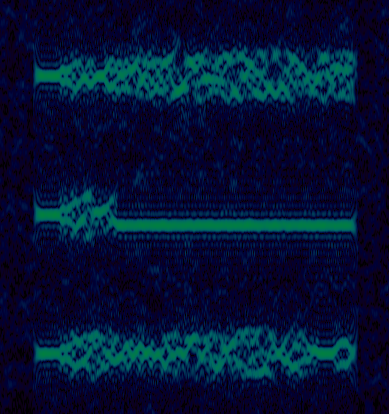Iridium Antenna Hack
A few months ago, I watched a great 32C3 talk about reverse-engineering the Iridium satellite communication network (video). I wanted to join in the fun, but Iridium signals are weak and require a specialized antenna mounted on a ground plane. My plan was to design a custom circuit board with a patch antenna, amplifier, and filter. I ordered some parts, and they sat on my desk because I didn't have time to design the PCB.
Today, I got impatient and thought to myself, "what is the simplest thing that might actually work?" I dug around in my many drawers of junk and found a piece of copper clad fiberglass, drilled a 1/8" (3.2mm) hole in it, attached the patch antenna, and soldered an SMA connector on the back side.

The SMA center pin is soldered directly to the patch antenna pin coming through the hole in the copper clad board. The other SMA pins are soldered to the copper cladding. There's no electrical connection between the cladding on the two sides of the board, which I'm sure is not ideal, but might be good enough…

I took my PortaPack and fancy new antenna into the back yard, tuned around 1623 MHz with the RF amplifier and gains turned up quite high. What did I see? Packets!
Here's several channels simultaneously visible in Inspectrum. The characteristics match descriptions I've found online (90ms frame interval, 41.7kHz channel spacing).

Here are some individual bursts:

Now to download the project source from the 32C3 talk, and see what I caught! While this hack worked out well, I think it'd still be valuable to put together an antenna + amplifier + filter combination and be able to pick more packets out of the noise.
Comments
Does this mean some decoding for iridium texts is coming in next version of portapack firmware? ;-)
@Vlad: I'd love to. It'll be a bit trickier than the terrestrial stuff I've done. The modulation is a kind I haven't worked with before, and there's the relativistic frequency shift tracking that will have to be dealt with. But these are things I'd like to learn about, soooo… Fortunately, there's a lot of work already done by schneider and Sec and balint (tricks I can borrow from his Inmarsat work).
Practically speaking, I will probably be limited to a single Iridium channel. That channel will probably be the paging/control channel(s), since following the voice/data channels is much more demanding. But that's just based on my limited and naive understanding at the moment. Perhaps it'll be easier than I think!
Check out my friends web page for PCB based antennas: Kent Britain www.wa5vjb.com
I have been using his LPDA's for over a year now with great success. He also has antennas with LNA circuits printed at the feed point. Imagine a WB Vivaldi with LNA and only a male SMA to the HRF One. Indeed, a very low loss RX! Now someone needs to design a switchable filter system…
73, Damon KC5CQW
If you want to try any of the Kent Electronics (WA5VJB) antennas for your projects, let me know and I'll send you a sample.
Sincerely, Tamara Wilhite, Kent Electronics